The Mosque, officially Mosque-Cathedral of Cordoba, is a unique monument in Spain and, we dare say, in the whole world.
As its name indicates, it is a hybrid religious structure, a Christian cathedral in the middle of a mosque. We must go back to the 6th century AD to better understand its origin. At that time, a minor basilica built during the city’s Visigoth period became a mosque with the arrival of the Muslims. After the Christian Reconquest, it was decided to leave the Islamic structure standing and build a cathedral inside it.
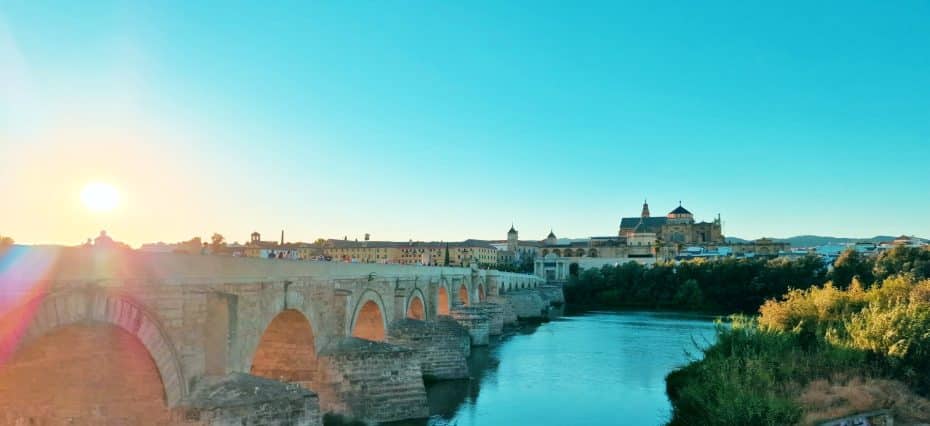
The Mosque-Cathedral of Cordoba is one of the most iconic buildings of the city and the whole province. Along with the Alhambra in Granada, it is considered Al-Andalus‘ most important architectural monument. It was declared a World Heritage Site by UNESCO and is currently visited by about two million people, making it one of the most visited monuments in Spain.
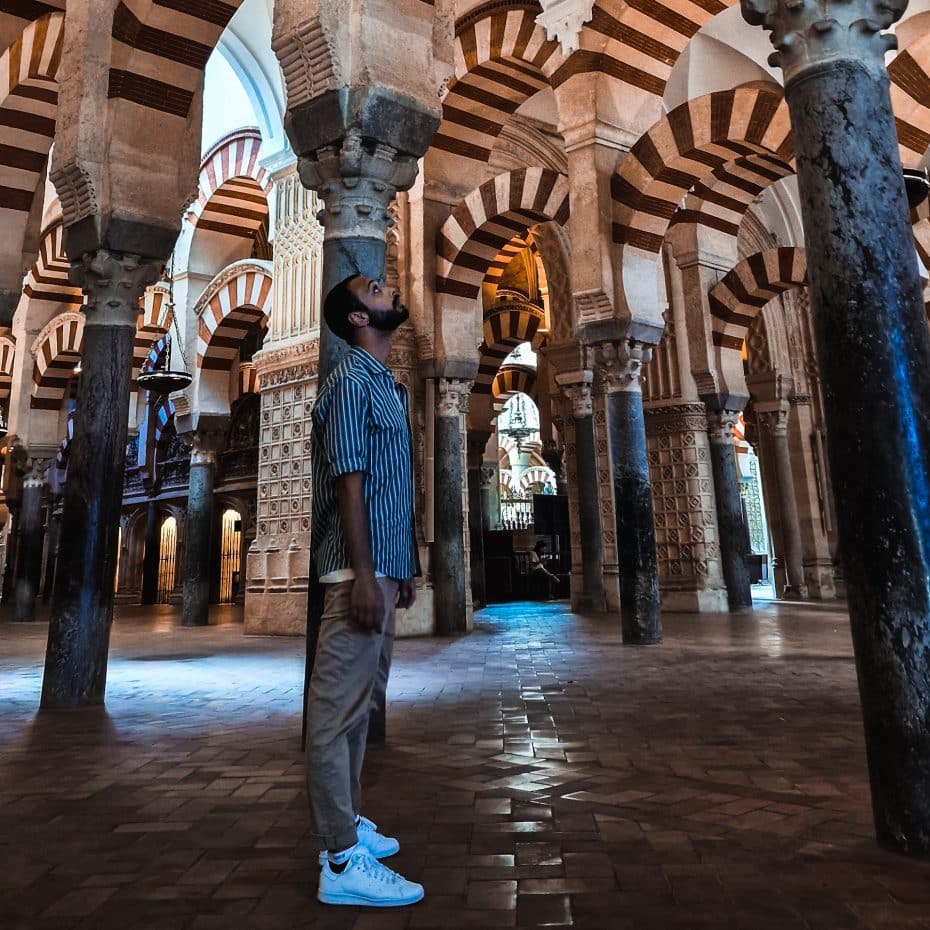
The building has epic dimensions. Its floor plan is 24,000 square metres, and its characteristic red and white arches are supported by a forest of 856 columns. Visiting the Mosque-Cathedral is sure to be number one on your list of things to see in Cordoba.
Tickets and guided tours of the Mosque-Cathedral of Cordoba
Mosque of Cordoba: Brief History
To truly appreciate the Mosque of Cordoba, you need to understand a little about its history, which begins with the Umayyad Dynasty in Damascus, Syria. After the prophet Muhammad’s death in 632, the Islamic world was ruled by four successive caliphs who formed the caliphate of Rashidun. After Rashidun’s fall, the Umayyad Dynasty emerged.
In 750, less than 100 years after Islam’s origin, the Umayyad caliphate was overthrown by its rivals, the Abbasids. The sole survivor of the Umayyad Royal Family, Abd al-Rahman, grandson of the last caliph, was 19 years old when he fled Syria. Five years later, he arrived in Spain, and a year later, he conquered Cordoba and became the first emir of Arab Spain or Al-Andalus.
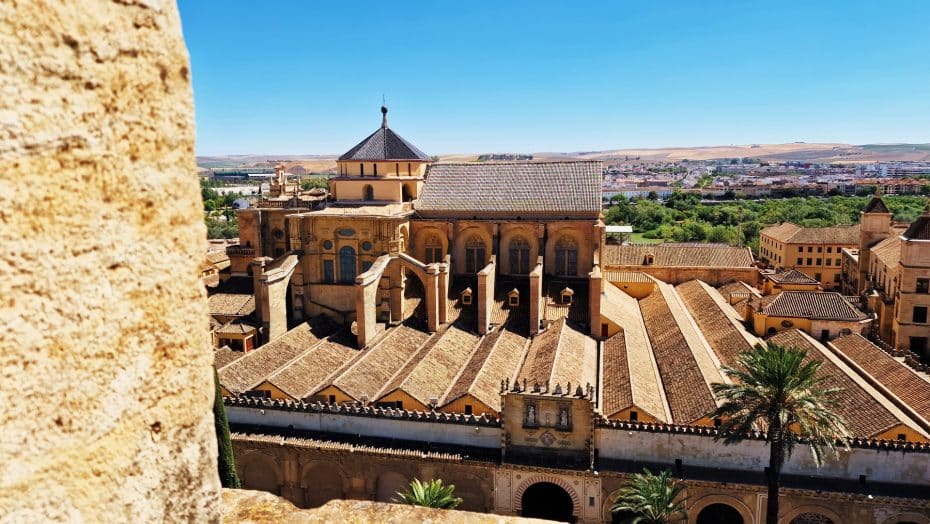
Thirty years later, in 786, Abd al-Rahman bought the remains of the church of San Vicente from his Christian subjects, demolished it and began the construction of a grand mosque as a symbol of the political, military and religious power of the Umayyads.
The columns of St. Vincent’s Church and many other ruined temples and palaces in the city were used to construct the mosque. The original prayer hall could accommodate up to 5,000 worshippers. However, the mosque would grow four times its original size over the next two centuries.
The first mosque consisted of eleven longitudinal naves facing the Guadalquivir River. Later, Hisham I, the second emir of Cordoba, intervened in the structure, finishing off the courtyard or sahn and erecting the first minaret. In the time of Abd al-Rahman II and with the growth of the city of Cordoba, it was necessary to expand the mosque to accommodate more worshipers in the Friday celebrations. This expansion began in 833 and ended in 855. During this intervention, the courtyard was enlarged, the minaret built by Hisham I was demolished, and a new one (which would be the model for other minarets and Mudejar bell towers in Spain) was built.
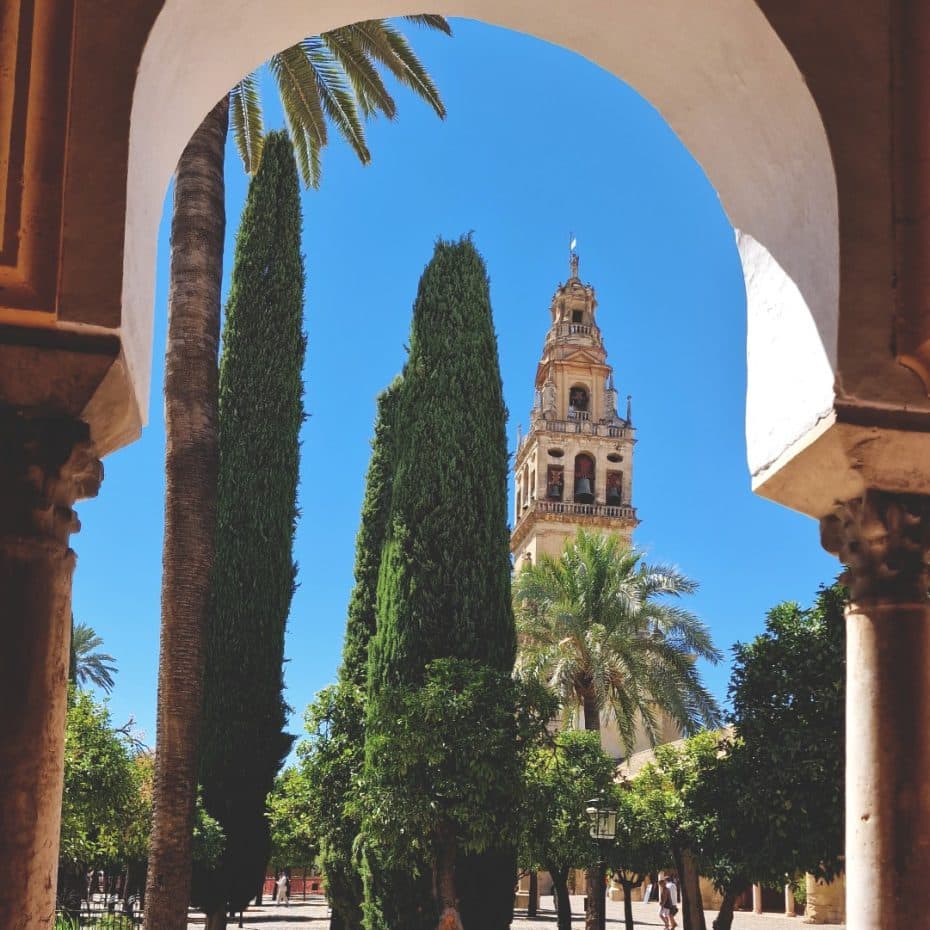
In the 10th century, taking advantage of the caliphate’s prosperity, the most extensive interventions were carried out in the Mosque of Cordoba. However, the most important is that of Alhaken II, who demolished the wall of the qibla of Abd al-Rahman II and expanded the oratory. In addition, the double wall of the qibla and the roof of the mihrab were built, among other improvements.
With the continued population growth of Cordoba, Almanzor undertook another expansion of the Mosque of Cordoba. Due to the proximity of the Guadalquivir River, the expansion was made to the east.
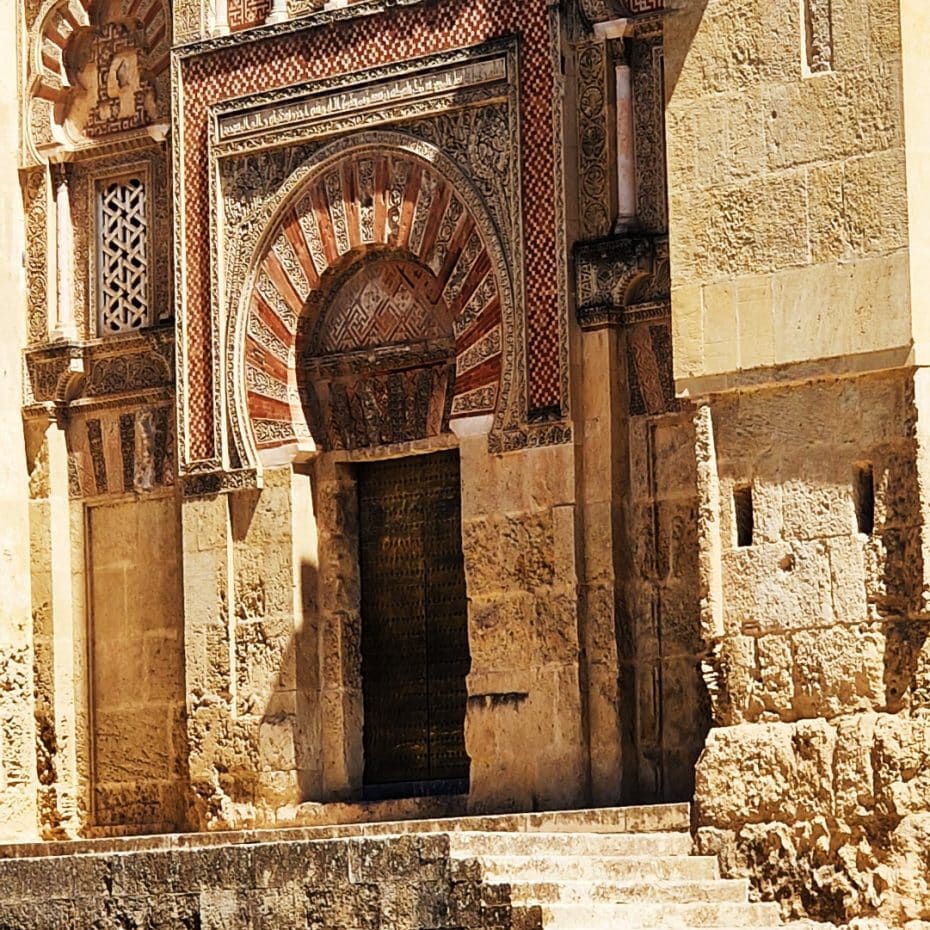
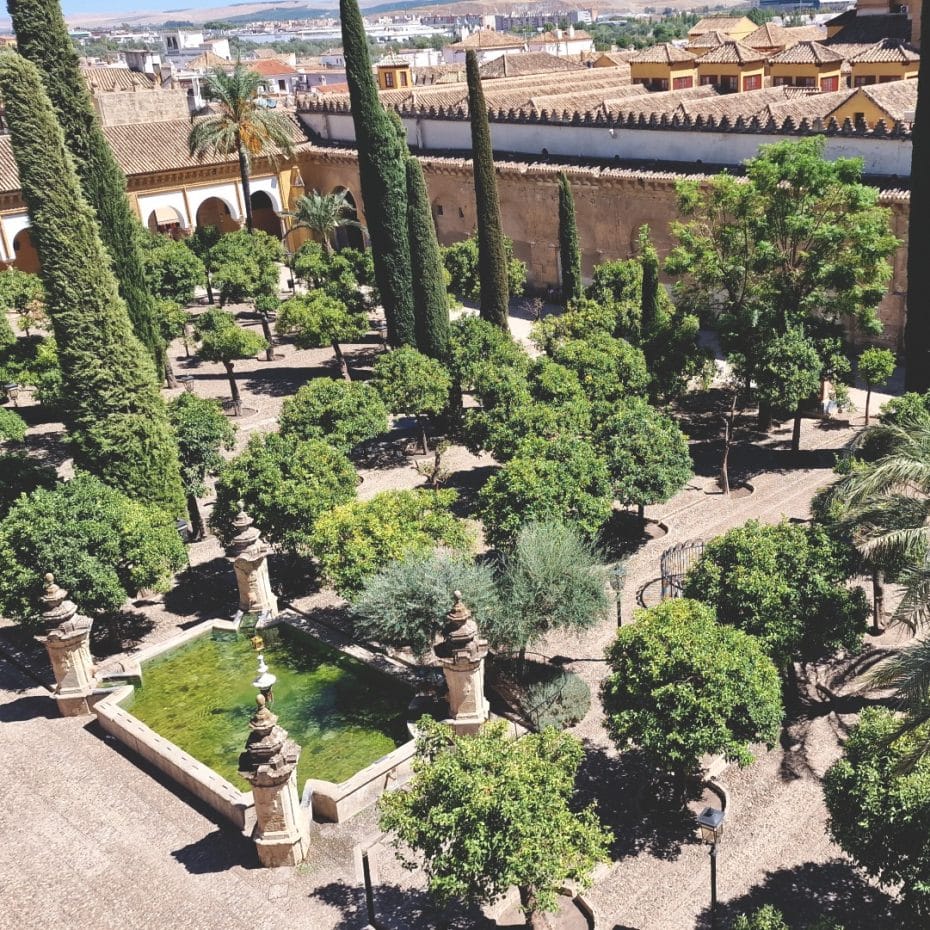
During the 480 years of Umayyad rule in Cordoba, the Christian monarchs of Spain fought constant battles with the Arabs in what became known as La Reconquista. In 1236, Cordoba finally fell to the Christian forces of Ferdinand III of Castile.
Fortunately, instead of destroying the mosque, Ferdinand III decided to transform it into a Christian cathedral to symbolize his victory over Islam. At first, a few chapels were added to the walls, and three and a half centuries later, a monumental Gothic cathedral was built right in the centre of the mosque.
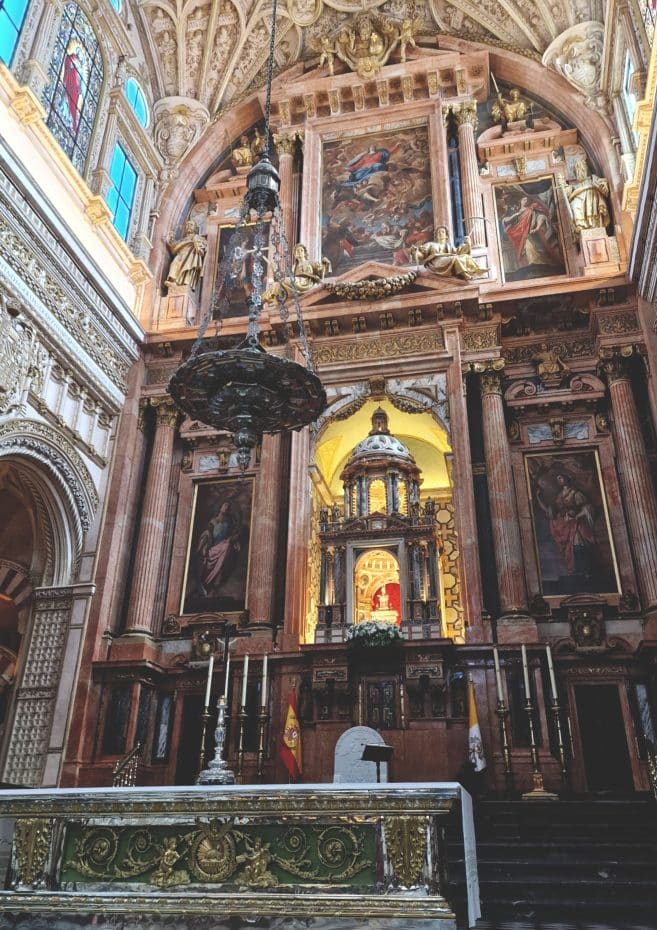
This series of interventions made the building a perfect blend of Eastern and Western artistic values.
Architecture of the Mosque-Cathedral of Cordoba: What Not to Miss
The Mosque-Cathedral of Cordoba is divided into two parts that are easy to differentiate. The first is the outer part of the courtyard or sahn, where different elements, such as the minaret, are located. The other is inside the Mosque of Cordoba and is divided into five main areas.
Orange Trees Courtyard
This courtyard has evolved with the reforms and extensions made in the Mosque of Cordoba. It is currently 130 metres long by 50 metres wide and gets its name from the many orange trees planted inside since the 15th century. In the 18th century, palm, olive, and cypresses were added.
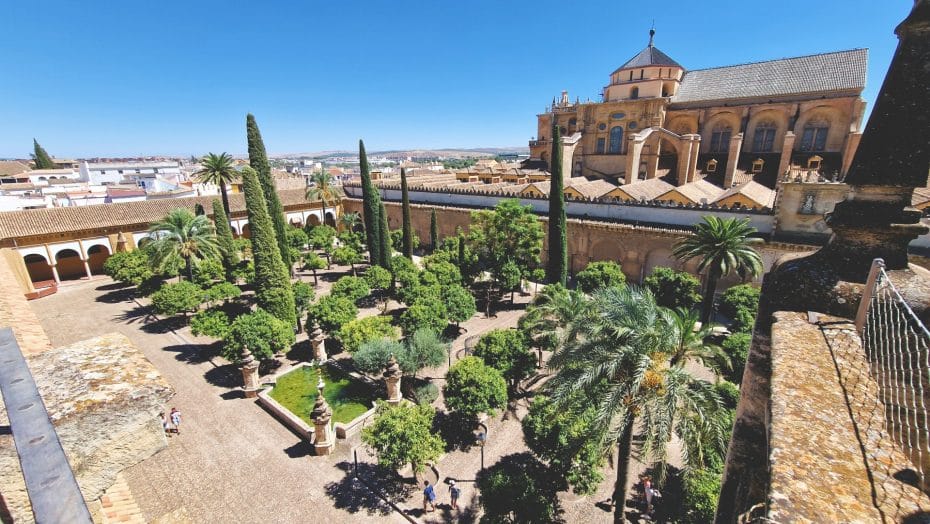
In it, you will find the Fountain of Santa Maria and the Fountain of Cinamomo. Under the courtyard was a large cistern that supplied the water necessary for the purification of the Muslim faithful before entering the mosque.
Minaret (Bell Tower)
Built by Abd al-Rahman III, the minaret is currently located inside the bell tower. It is separated from the main structure and is visible from different points of Cordoba.
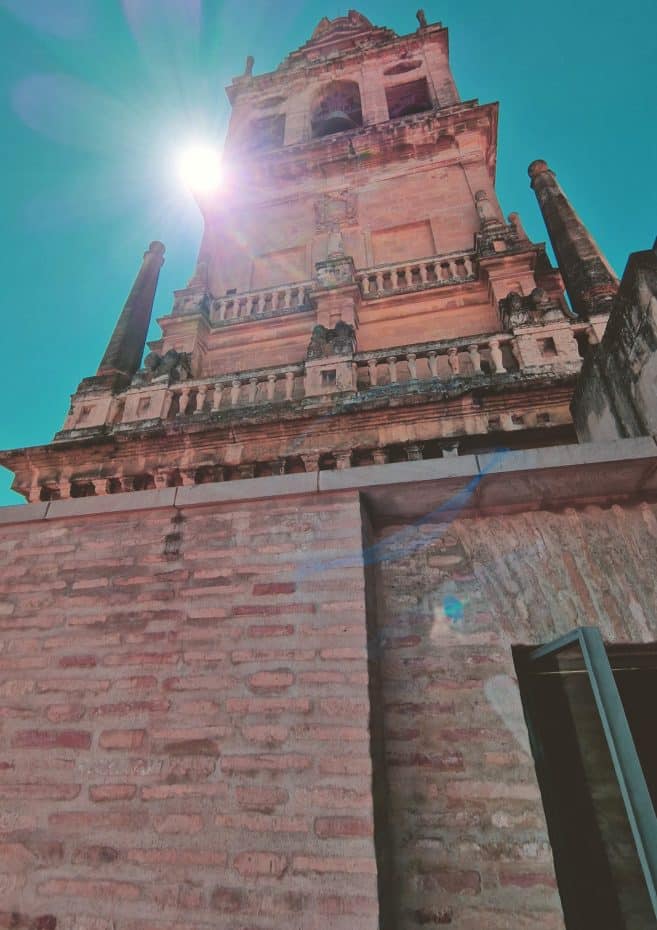
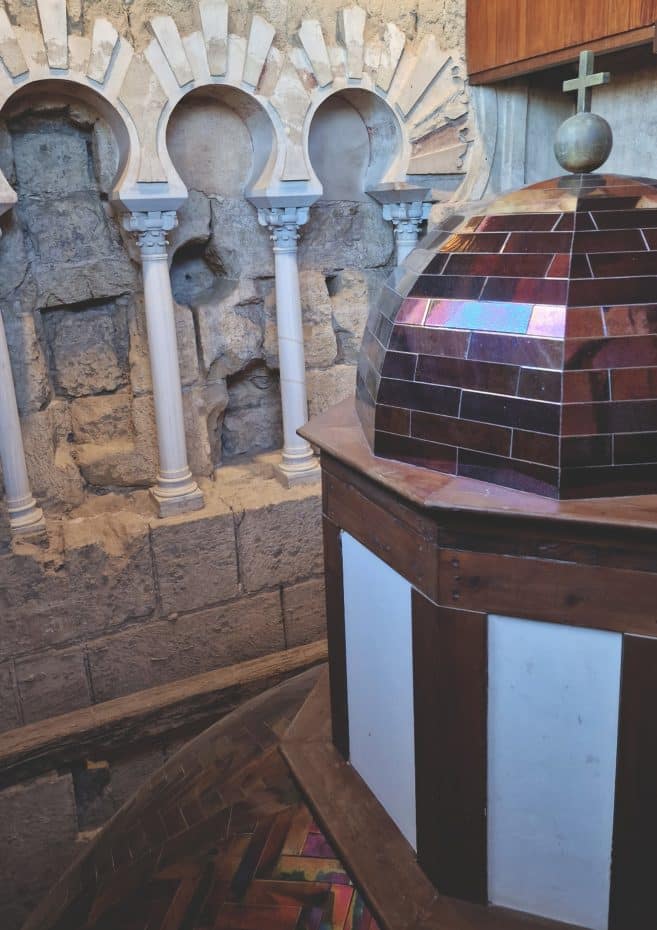
From the top, you can also admire splendid views of the city of Cordoba, particularly the historic centre.
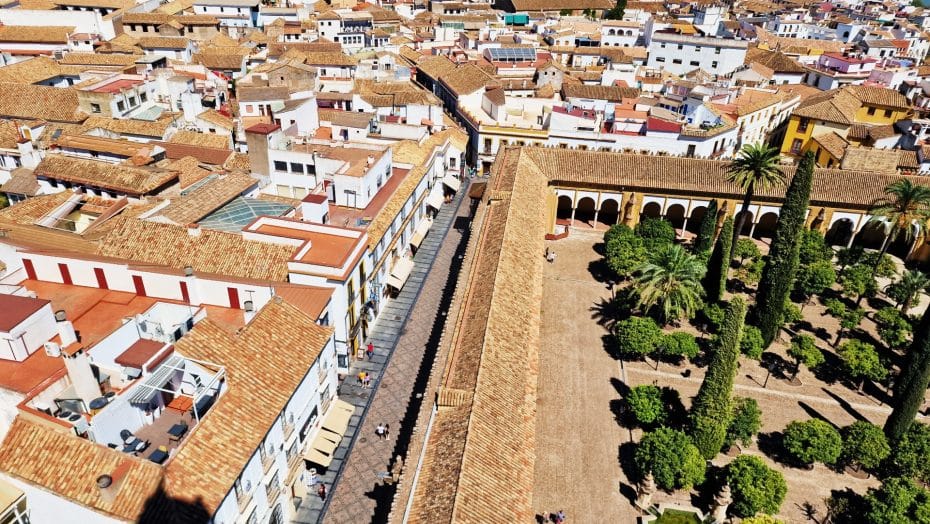
Forest of Columns
The Mosque of Cordoba has the distinction of being the third largest in the world. This makes the succession of arches and columns inside a sight to behold.
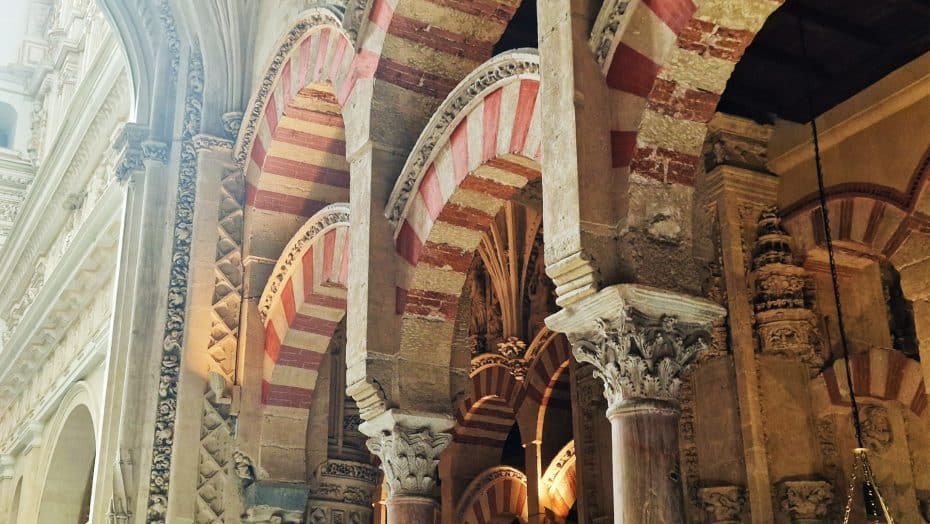
Called Bosque de Columnas or Bosque de Palmas, it contains a total of 1,300 columns and 760 arches spread over 23,400 square meters.
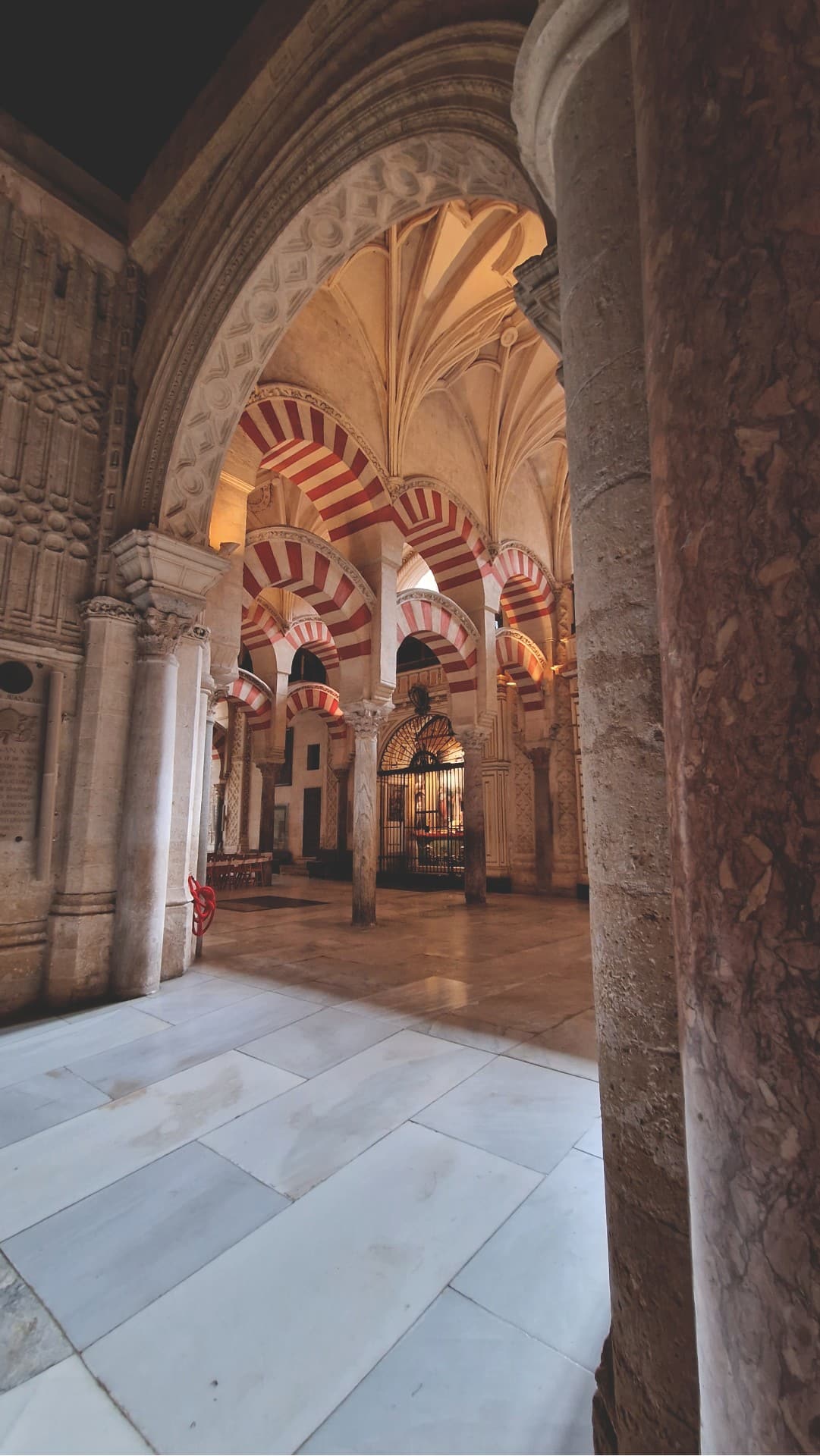
Cordoba Cathedral
The Cathedral of Cordoba is located inside the Mosque of Cordoba, making it a unique monument in the world.
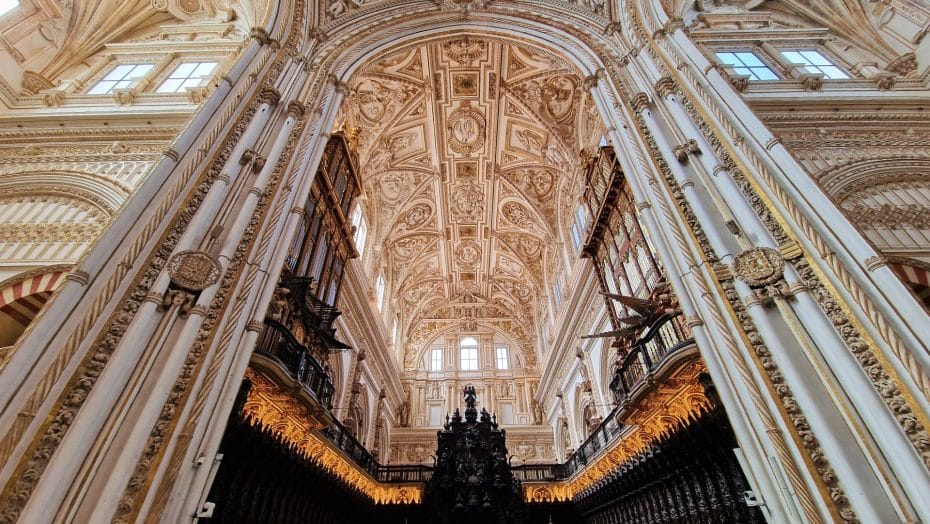
The most prominent parts of the cathedral are the High Altar, the Cross and the Choir. The decision to build the Cathedral of Cordoba inside the Mosque of Cordoba raised much controversy then.
Mihrab
The mihrab is the central niche of the mosque wall to which prayer is directed. It represents Allah, and while other mosques only have a small niche in the qibla, the Mosque of Cordoba has a profusely decorated meters ample space.
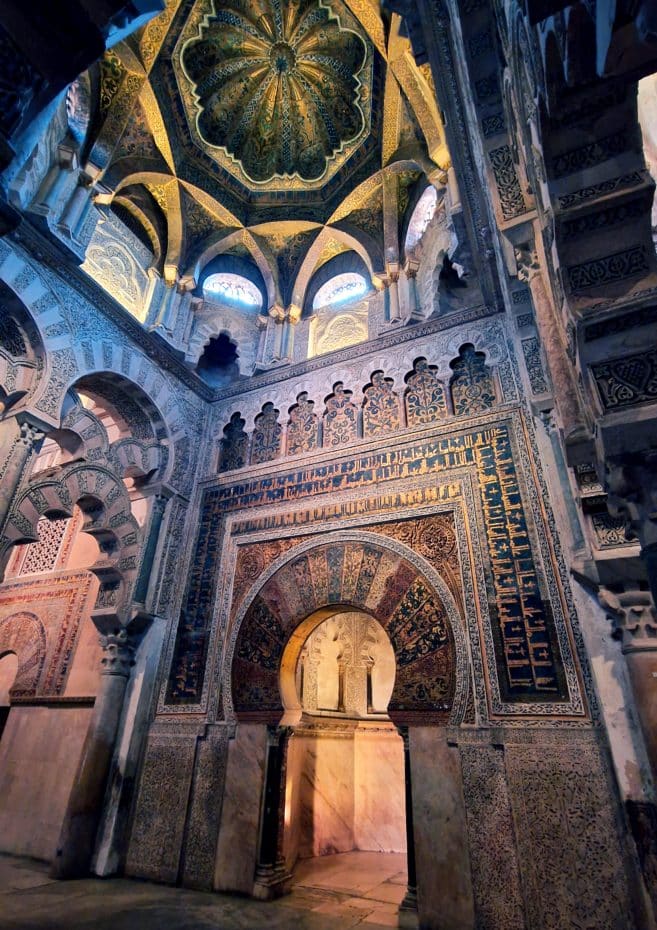
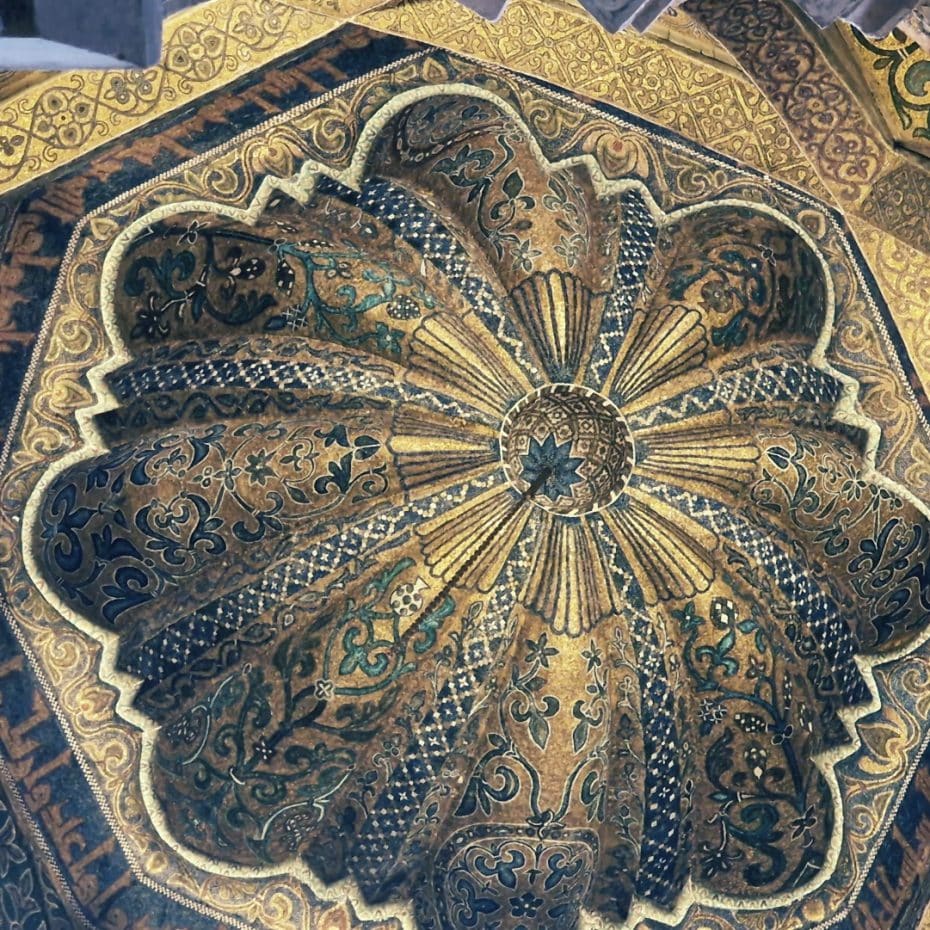
It is located next to the maqsura, and its exterior decoration is one of the site’s most striking features. It is decorated with marble, demonstrating Cordoba’s grandeur in Islamic times.
Chapel of Villaviciosa
It was the first important Christian construction in the Mosque of Cordoba. It was built in the triforium and served as the main chapel until the final cathedral was built.
Tabernacle Chapel
Its importance is due to the paintings and murals that adorn it. It emphasizes the painting of the Holy Supper and the representation of the Holy Martyrs of Cordoba.
Helpful Information for Visiting the Mosque of Cordoba
Visiting Hours Mosque-Cathedral of Cordoba
- From March to October: Monday to Saturday from 10:00 to 19:00. Sundays from 8:30 to 13:30 and 15:00 to 19:00.
- From November to February: Monday to Saturday from 10:00 to 18:00. Sundays from 8:30 to 13:30 and 15:00 to 18:00.
Ticket Price Mosque of Cordoba
You can buy tickets for the Mosque and the Bell Tower on the official website of the Mosque. You do not need to print paper copies of the tickets. You can go directly to the entrance and present the QR code to scan.
Rates
- Adults: 13€.
- Seniors over 65 and students: 10€.
- Children from 10 to 14 years old: 7€.
- Children under ten years old and residents of Cordoba: Free.
Mosque Audioguides
You can also rent an audio guide at the kiosk in the Patio de Los Naranjos.
Guided tours of the Mosque
Considering the 12 centuries of history of the Mosque-Cathedral of Cordoba, a guided tour is an excellent way to learn about its history and truly appreciate the marvel that is the Mosque.
This is one of the best tours: Córdoba: Skip-the-Ticket-Line Mosque-Cathedral Guided Tour.
Best time to visit the Mosque-Cathedral
The best time to visit the Mosque is early morning or late afternoon. Essentially, you want to avoid the period between 10:00 and 16:00, when the tour buses from Seville, Granada and Malaga arrive.
Discover the best time to visit Spain



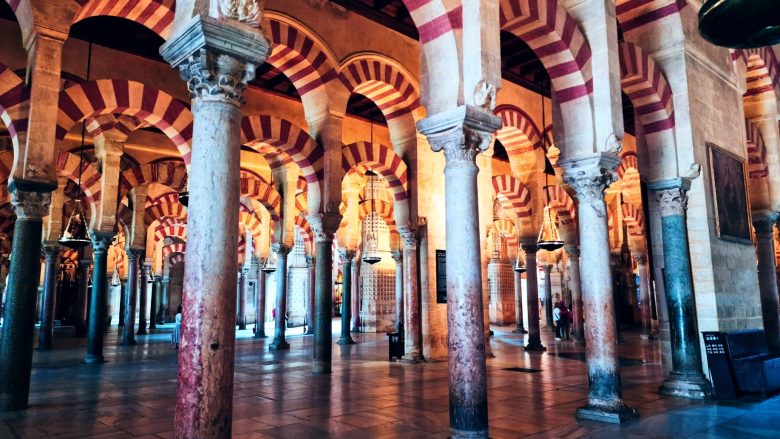
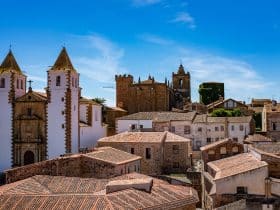
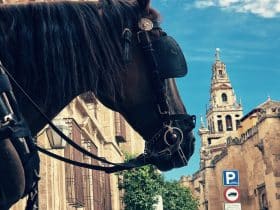
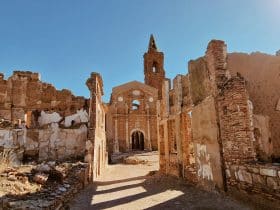
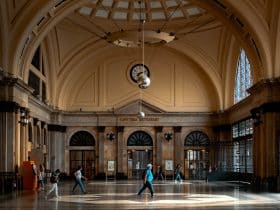




















Leave a Reply
View Comments